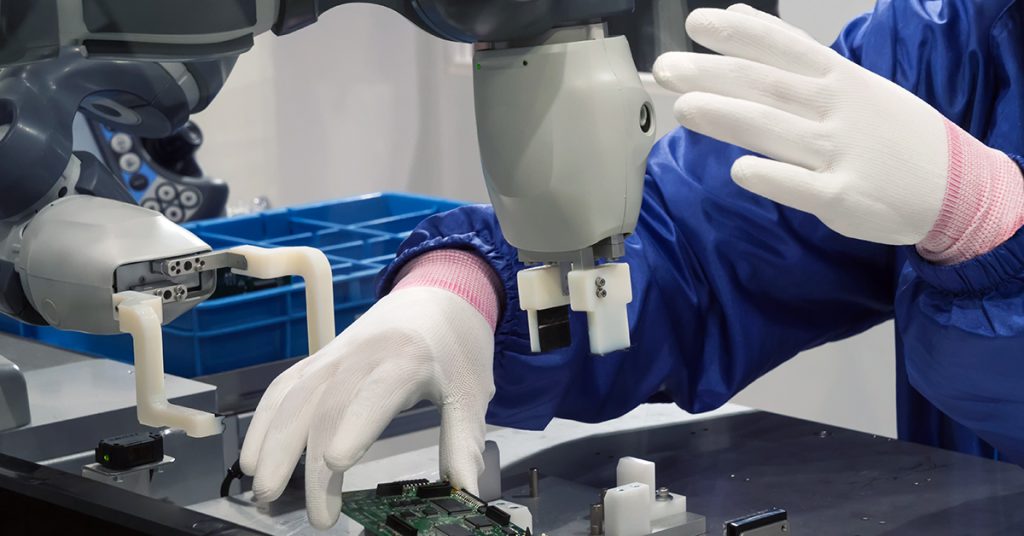
The cobot (collaborative robot) market was predicted to grow more than $10 billion and make up 34% of all robot sales by 2025 – and that was before the COVID-19 pandemic hit! With cobots currently only accounting for a small percentage of the current market, this is a seismic shift.
From system manufacturers and accessory software and end-of-arm tooling suppliers, the cobot industry has experienced significant innovation over recent years. This has only widened their appeal and application potential.
Demand for cobots is increasing: so what does the future look like for this industry?
Why cobots?
The clue is in the name. Cobots or Collaborative Robots are designed to work ‘collaboratively’ alongside humans – undertaking repetitive, dangerous and/or error-prone tasks, leaving workers to focus on more productive and value-adding activities. Studies show that cobot investment significantly increases operational efficiencies and reduces human and machine idle time in production-led environments and on shop floors, by up to 85%.
Another string to the cobot bow is their relatively low cost. Cobots cost less to purchase and maintain than their often larger industrial robot counterparts and, with their sophisticated torque-sensing capabilities and lightweight but still rigid construction, are safe to use and easy to deploy. This makes them potential game-changers for small and medium-sized businesses that need to ‘up their games’ and are serious about automation but who do not need (or can justify) an investment in large, expensive and often complex industrial robot systems.
Cobots’ inherent safety, flexibility, easy integration and collaborative nature deliver significant productivity improvements and a faster return on investment than one might at first expect.
Cobots can improve health and safety in the workplace, particularly in manufacturing sector settings, for example. Employees here can sometimes be exposed to specific occupational health and safety hazards i.e. heavy lifting, working in hazardous conditions or with dangerous substances etc. However, with cobots being able to take on these potentially difficult and dangerous tasks, human workers can be removed and/or protected from such environments and are able to focus their efforts on more productive (and safer) tasks.
What’s next for cobots?
The future is looking bright for cobots. Further automation across all areas of manufacturing is inevitable, but with cobots on the rise, there’s no danger in them taking over completely. Their need for human intervention (i.e. with set-ups and programming, for example) means that they will always need to sit alongside us in the workplace.
Of course, many jobs that humans do today may be taken over by cobots at some point in the future, but for a sector suffering skills shortages such as manufacturing, this may be a good thing. Plus, the more the cobot industry continues to grow, the more jobs it will create in turn.
Perhaps the future will also see more cobots being applied and used outside of the factory setting. Companies such as Ford and Amazon have already shown the way, but advances in technology are now allowing smaller businesses to follow in their footsteps. Innovative cobot applications can be seen in the hospitality, agricultural and travel industries – so who knows where we will see them next? Cobots could become commonplace within our homes, office workspaces, retail stores – there are almost no limits. With the market growing at such a rate, nothing is out of reach.

